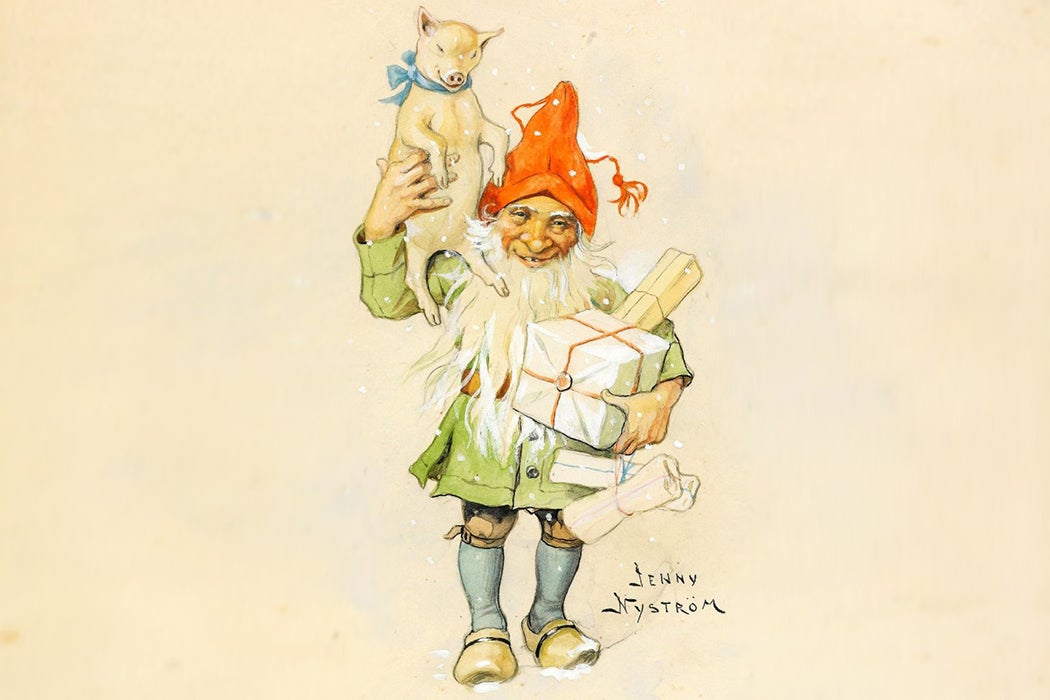It’s not hard to find people who criticize capitalism around the holidays, especially in light of the high consumerism (and inherent inequity) that chokes Black Friday and Cyber Whenever sales. But take it from this critical atheist “elf,” they still want stuff. Nice stuff. So here are some gift ideas for the curmudgeon in your life who will only admit to the dialectical kind of materialism.
Monthly Box of Socks That’s So Convenient It’s Probably Unethical
Now that you can get socks delivered straight to your mailbox once a month (with premium sets of three pairs around—wait for it—$100), scholar of design Damon Taylor asks you to see that what you’re buying isn’t really the socks, it’s a post-industrial “product-service system.” Getting those million-thread-count “membranes” from looms in developing nations to tootsies in the First World turns out to be convenient but ethically problematic.
Hand-Knitted Sweater That Is Actually, Ahem, a Piece of History and NOT to Be Worn Ironically
Want to recreate some midcentury midwestern suburbiana? Feel like discovering a right-on woman of wool? Track down a vintage Elizabeth Zimmerman knitting design on the internet and get to it! Born in Britain, Zimmerman ended up in suburban Milwaukee after fleeing from the Nazis in 1937 with her husband. As Kathryn Parks and Colleen McFarland write, in the 1950s her knitting patterns ruled the pages of Woman’s Day, Vogue Knitting, and other mass-circulation magazines. But she got sick of the glamorous life and struck out on her own, with a lo-fi subscription newsletter that was “engagingly written, anti-establishment in tone, illustrated by hand, and chock full of attitude.” Crafty!
Underwear So Comfy You’ll Never Want to Take It Off but OMG Please Do
Surrender to those desultory podcast sponsors and buy your boo an $80 pair of boxer briefs, no matter their gender identity. As Paul Jobling writes, you wouldn’t be the first. Advertisers for men’s underwear in the 1920s faced the problem of “how to transcend the apathy or resistance of the male customer, and how to combat the idea that men don’t care what underwear looks like as long as it keeps them warm.” Pretty soon, their success was bulging (thanks in part to the designs of gay admen); eventually, we got Mark Wahlberg in his Calvins hovering over the new, tourist-intensive Times Square.
Weekly Newsletter
Scented Candle with Mysteriously Specific Powers of Attraction to Lure Males to Their Deaths
While analyzing Valerie Solanas’s feminist rant of 1968, The S.C.U.M. Manifesto (“there remains to civic-minded, responsible, thrill-seeking females only to overthrow the government, eliminate the money system, institute complete automation and destroy the male sex”), you just might want to stimulate the olfactory sense. Why? As five researchers found, a scented candle placed in front of an open window attracted “several dozen” Thaumatomyia glabra (Meigen) flies to land in its tempting stink of deadly wax—but only the male of the species. Importantly, the trickster scent was blueberry muffin. Ah, how the Siren smell of domesticity can deceive.
Impressively Prestige and Also Nostalgic Game That Will Still Annoy the Moralists
Before violent video games set the hands of the anxious class to wringing, even before anyone worried about Atari addiction, the pinball machine caused panic among criminologists and social workers, including Arthur J. Bilek and Alan S. Ganz. As they explained in 1965, there were “amusement” pinball machines and “gambling” ones. To get rid of the latter, they wrote, law enforcement officers should be empowered to inspect pinball-having establishments, just as had happened with illegal slot machines. Today a vintage pinball machine might set you back thousands of clams. But the “bling bling!” is forever.







